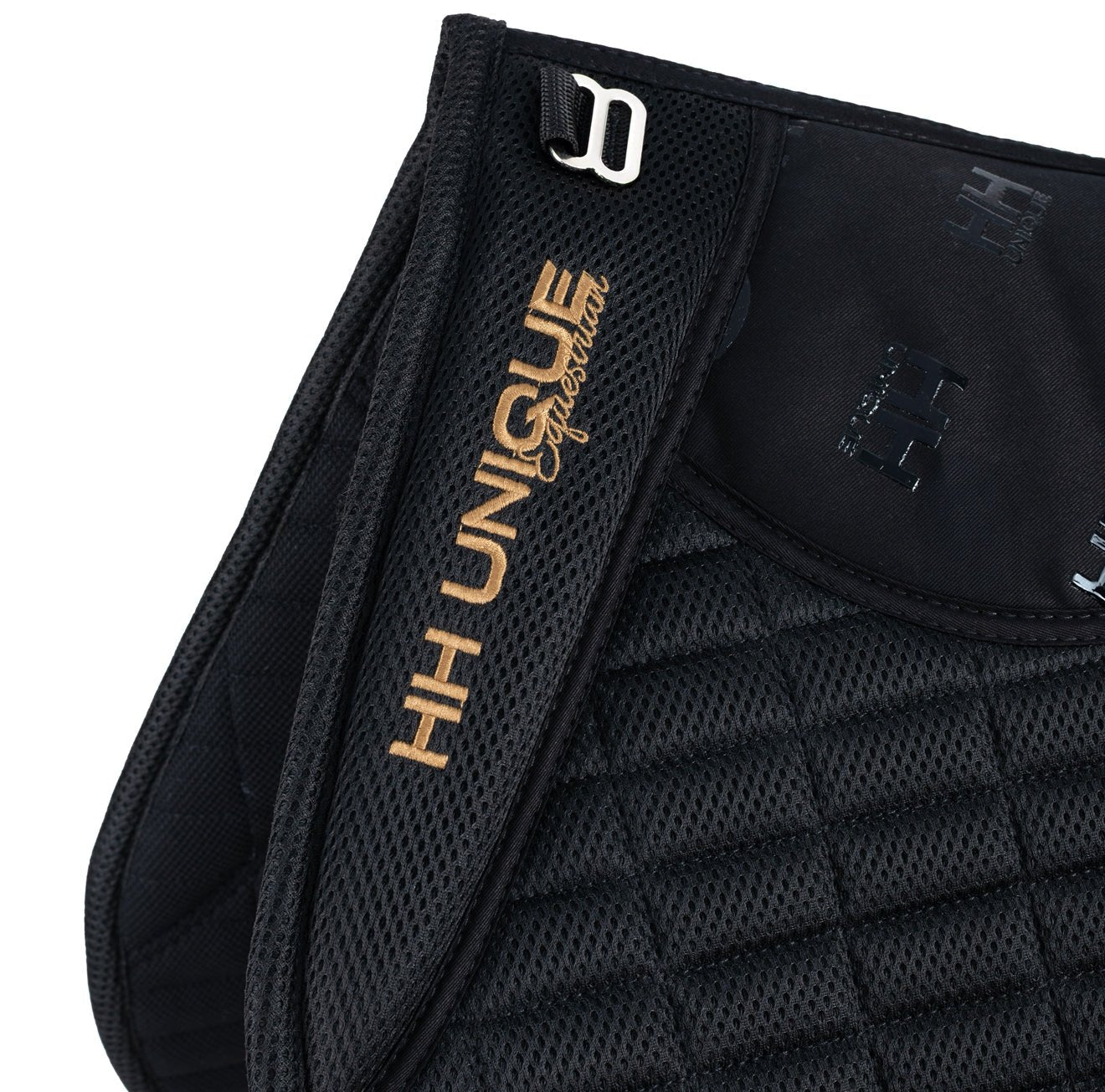How to Choose the Perfect Competition Leggings or Breeches for Ladies in Equestrian Sports
What Discipline Do You Compete In?
Choosing the right riding gear depends heavily on the equestrian discipline you participate in. From dressage to show jumping, different sports have distinct requirements regarding style, colour, and performance. Let’s break it down:
- Dressage
- Show Jumping
- Showing
- Working Hunters
- Other
Understanding Dress Code Rules for Different Disciplines
Each discipline may have its own specific colour and style requirements, often dictated by the rules of the club or affiliation you're competing under. For example, British Dressage has a detailed dress code outlining what is and isn't allowed in terms of colours and styles. These rules may vary from other disciplines, such as British Show Jumping Association (BSJA), which has different standards.
As rulebooks are constantly updated, it's important to check the latest guidelines before the start of each season, especially if you're affiliated with a particular club. Even if you're competing unaffiliated, some clubs may follow the same guidelines as affiliated competitions. So, always make sure to confirm with event organisers.
After all, respecting dress code guidelines not only ensures you’re competition-ready but also enhances your overall presentation and professionalism in the ring.
Popular Legging and Breech Colours by Discipline
1. Dressage
What Is Dressage?
Dressage is a prestigious equestrian discipline that involves a highly trained horse responding to subtle cues from the rider, performing graceful, controlled movements. The sport focuses on the horse’s gait, posture, and precision in executing various movements such as walks, trots, canters, and advanced techniques.
In dressage, the attire plays a key role in maintaining elegance and professionalism. Traditionally, white leggings or breeches have been the standard for dressage riders, as this classic colour exudes the timeless, disciplined look the sport demands.
However, in recent years, dress code regulations for affiliated dressage competitions have relaxed. More colours are now allowed, though still keeping the aesthetic smart and competitive. Riders now have the opportunity to express individuality, while still adhering to a clean and polished look.
2. Horzehoods’ Unique Approach to Dressage Gear
Innovative Design and Comfort
At HORZEHOODS, we’ve been at the forefront of designing high-performance riding leggings and breeches. We understand the importance of comfort, performance, and style. That's why we offer a unique collection of white competition leggings, enhanced with contrast seats for a more refined, tailored look.
- Contrast Seat for Practicality and Style: The contrast seat helps to hide saddle stains like oils and mud, ensuring that your leggings maintain a clean, fresh appearance throughout your ride.
- Flattering Fit: The contrast seat design is carefully engineered to create the illusion of a slimmer leg from the side view, offering both practical benefits and an elegant look while in the saddle.
- Tailored for Personalization: These leggings allow riders to match their gear with their competition jacket, tack, and saddle cloth, ensuring that everything from top to bottom reflects their personal style.
Whether you’re aiming for a clean, traditional white or prefer a more personalized touch, Horzehoods offers options that are both functional and fashionable, making sure you look and feel your best during every performance.
Key Features to Look for When Choosing Riding Leggings or Breeches
When selecting leggings or breeches for competition, consider these key aspects to enhance your riding experience:
- GSM (Grams per Square Meter): The fabric weight affects comfort, stretch, and durability. A GSM of 280-320 is ideal for all-year-round riding.
- Grip Seats: Opt for leggings or breeches with silicone or gel seat panels for added saddle grip without the discomfort of overly thick gel padding.
- Waistband Design: A high waist or a double-stitched waistband ensures stability, comfort, and prevents any twisting during rides.
- Breathability: Materials like AirMesh are ideal for keeping you cool, while still providing warmth in the winter months.
Conclusion
Choosing the right riding leggings or breeches depends on your discipline, style preferences, and the level of performance you seek. Whether you’re a dressage rider looking for traditional white leggings or you prefer a modern twist with contrast seats, Horzehoods has you covered with high-quality, innovative designs. Always check the dress code requirements of your competition and club to ensure you’re in line with their rules and look your best in the ring.
For more information on competition leggings, breeches, and other equestrian gear, visit our website or contact us directly.



































